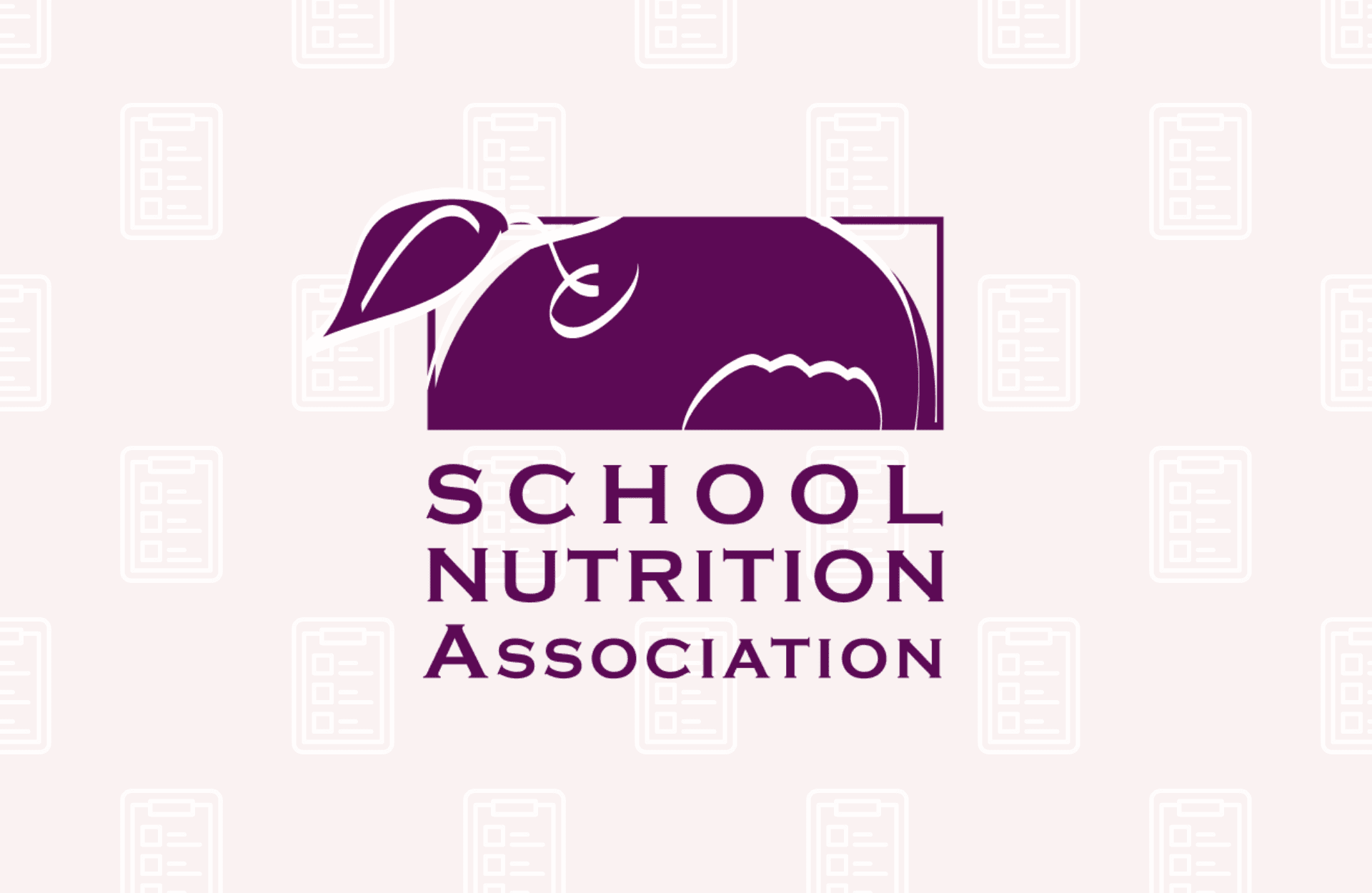FOR IMMEDIATE RELEASE:
Contact: Diane Pratt-Heavner
703-576-7526
media@schoolnutrition.org
SNA survey finds shortages on food, supplies & staff add to financial woes
ARLINGTON, Va. – A new School Nutrition Association (SNA) survey reveals extensive impacts of supply chain and staffing challenges on school meal programs’ financial and operational sustainability. SNA’s 2021 Supply Chain Survey of 1,212 school meal program directors underscores the importance of U.S. Department of Agriculture (USDA) pandemic waivers and the urgent need for continued regulatory relief and funding to support school nutrition programs for students next school year.
The survey revealed a wide variety of pandemic supply chain issues impacting school meal programs from every geographic region and district size. The top three challenges, cited by over 98% of respondents, are:
- Menu items not available in sufficient quantities/shortages.
- Supplies/packaging not available in sufficient quantities.
- Menu items discontinued by a manufacturer.
More than three quarters of respondents indicated these three issues are “significant challenges.”
“Supply chain disruptions are making it infinitely more difficult to plan and serve nutritious meals, critical to student health and success,” said School Nutrition Association President Beth Wallace, MBA, SNS. “School nutrition professionals continue to ensure healthy meals are available for students, but perpetually difficult conditions have forced many last-minute menu changes and limited the number of choices in school cafeterias. Given the extent of these disruptions and ongoing financial challenges for school meal programs, SNA is urging USDA to extend pandemic school nutrition waivers through the 2022/23 School Year.”
Supply chain disruptions leave school meal programs scrambling to place additional orders for substitute menu items, find new vendors when orders are shorted, cancelled or delayed, and even make trips to local stores to purchase necessary food and supplies.
Staff Shortages:
National labor shortages are impacting school meal programs, which often compete with local restaurants for employees.
- Nearly all respondents (95%) indicated staff shortages are a challenge for their program.
- Staffing is a greater concern for large school districts serving more than 25,000 students. Nearly 90% reported a “significant challenge.”
Staffing challenges persist despite extensive efforts to attract workers:
- 42% of programs have raised salaries (15% are considering this step)
- 19% report offering a bonus (14% considering)
- For programs not providing raises/bonus, 58% indicate they have not been approved by district administrators and a third indicate a lack of sufficient funds to provide them.
Supply chain disruptions have school nutrition staff stretched thin as they struggle to manage orders and re-work menus, which require more staff time and resources. Staff shortages also limit the opportunity to offer more labor-intensive menu options, such as customizable entrées and freshly cut and portioned produce.
Financial Hurdles:
Federal pandemic waivers have allowed schools to serve all students free meals without an application during School Year 2021/22. Recognizing rising pandemic costs, USDA is reimbursing schools for free meals at the higher Summer Food Service Program (SFSP) rate this school year. However, only about half of school meal programs indicate these reimbursement rates for breakfast and lunch are sufficient to cover the costs of producing a meal, including food, labor, supplies and pandemic costs:
- 36% of respondents say the lunch reimbursement rate is insufficient (18% unsure).
- 33% say breakfast reimbursements are insufficient (16% unsure).
School meal programs have always operated on extremely tight budgets. Pandemic-related losses left many programs on shaky financial ground this school year, just as supply chain issues compounded rising costs:
- 97% of respondents are challenged by higher costs, compared to contracted bids, with nearly three quarters citing it as a “significant challenge.”
- 38% of responding school meal programs closed SY 2020/21 with an overall net loss (12% unsure).
Regulatory Concerns:
More than 96% of respondents cited challenges with suppliers not carrying sufficient menu items needed to meet nutrition standards, such as whole-grain, low-sodium and low-fat options.
USDA issued waivers for SY 2021/22 to ensure schools are not penalized for failing to meet these requirements due to supply chain disruptions. Given widespread reports of discontinued K-12 menu items, consolidation in the school nutrition industry and concerns regarding the upcoming bid season, school meal programs will require regulatory relief moving forward. SNA is urging USDA to extend pandemic waivers through SY 2022/23.
Even prior to SY 2021/22, an overwhelming majority of school nutrition directors also expressed concerns about future sodium regulations and the mandate that all grains offered with school meals be whole grain-rich. SNA is also urging USDA to extend the delay on Target 2 sodium mandates until July 2024, eliminate unachievable Final Target sodium limits and restore the mandate that half of all grains offered with school meals be whole grain rich.
About School Nutrition Association:
The School Nutrition Association (SNA) is a national, non-profit professional organization representing 50,000 school nutrition professionals across the country. Founded in 1946, SNA and its members are dedicated to making healthy school meals and nutrition education available to all students.
Related Articles

SNA Urges MAHA Commission to Invest in School Meals
Read More

School Nutrition Professionals to Implore Congress to Protect School Meals
Read More




